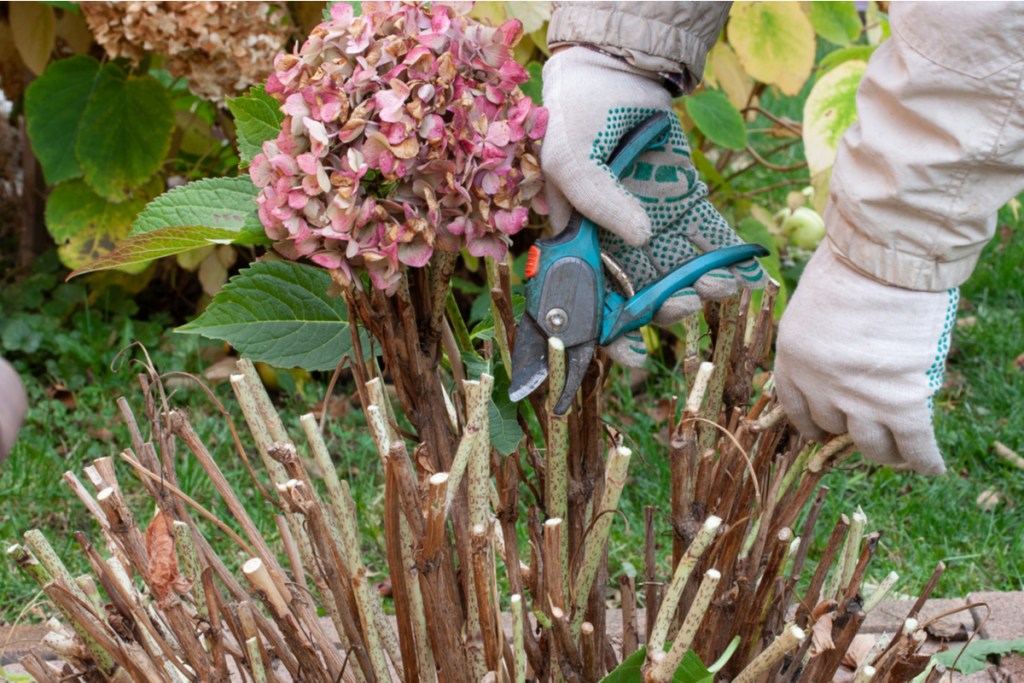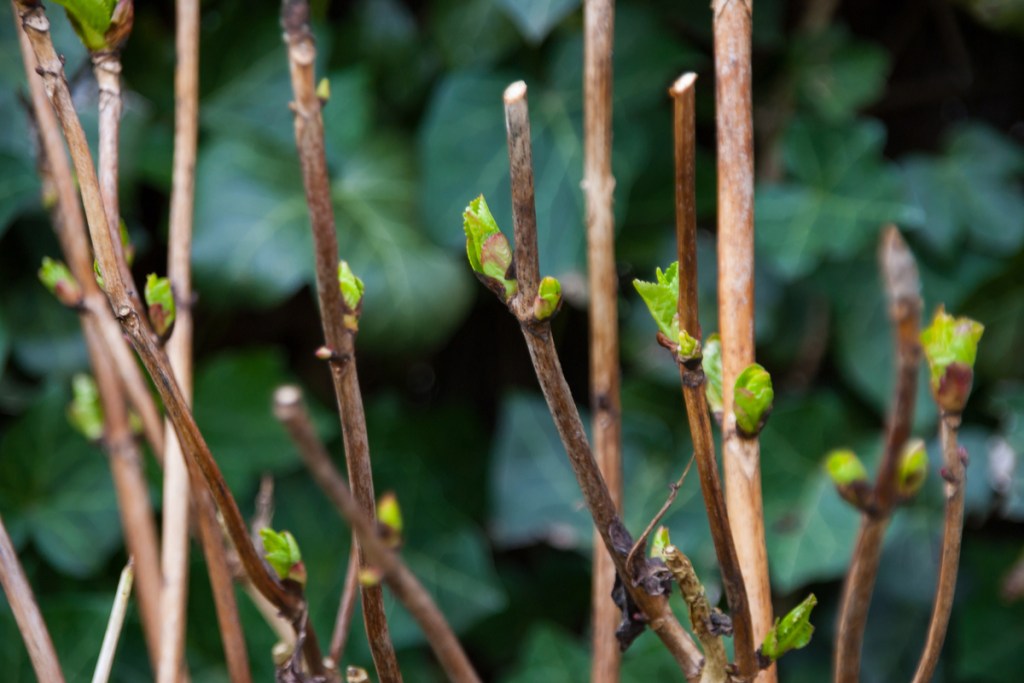Hydrangeas are beautiful and interesting flowers. They change color based on the pH of the soil, making them a unique and fascinating addition to most gardens. They’re easy to grow as well, whether you’re growing them from a nursery seedling or a cutting taken from an established hydrangea. One important part of hydrangea care is pruning them. If you’ve never pruned a plant before, then you may not be sure where to start. Don’t worry, we’ll walk you through it step-by-step in this simple guide.
When to prune hydrangeas
You may have heard some conflicting information on when you should be pruning your hydrangeas. Some say it should be done in spring or winter, while others say it’s best to prune them in late summer. So which is it? The truth is that it depends on what kind of hydrangea you have. Some hydrangea varieties bloom on new growth, which are branches that grew in that year. Other varieties bloom on old growth, or branches that grew the year before.
If you aren’t certain which variety you have, then skip pruning to watch your plant’s blooming habits. If your hydrangea blooms on new growth, then you should prune it in late winter or early spring, before it comes out of dormancy. If it blooms on old growth, then it’s better to prune it in late summer, right after it blooms. They aren’t just pruned at different times, but in different ways as well.
In both cases, pruning should be done before flower buds form. Hydrangeas that bloom on old growth, such as bigleaf and oakleaf hydrangeas, begin forming buds the year before they bloom. Take care not to prune them in the fall or else you may not have many flowers next year.

What tools do you need?
Depending on the size of your hydrangea bush, you can use a pair of scissors, a pair of bypass garden shears, or a pair of bypass loppers. In most cases, loppers are unnecessary, but they can be helpful if you’re dealing with an older, larger bush. You can use anvil shears if that’s all you have, but bypass shears are more effective and do less damage to the plant.
Bypass shears are structured like scissors, with the blades offset slightly to pass by each other. Anvil shears have one blade and one flat piece, or anvil, that meet when closed. Anvil shears tend to crush branches, while bypass shears can cut cleanly through.
You may also want a garbage bag or lawn waste collection bag for the branches you cut. This isn’t strictly necessary, as there are other ways to dispose of the branches. However, if you live in an urban environment or plan on throwing the branches away, then they’re quite convenient.

Pruning hydrangeas in spring
Pruning hydrangeas in spring is perhaps the easiest, but most intimidating, form of pruning. This is because they can be cut down to the ground. It can be frightening to cut a plant back entirely, especially if you’ve never done it before, but for hydrangeas that bloom on new growth, it’s healthy and safe. Cutting all the old stems away opens up plenty of room for new branches to grow, leading to larger, but fewer, flowers.
If you find yourself too anxious, or if you want to cultivate a taller hydrangea shrub, then you can cut only the top of the plant. Cut the plant back to between one-half and one-third of its previous size. The remaining wood will support new growth, keeping the plant upright and preventing new growth from drooping. This results in more flowers, but they’re typically smaller than those you might get from cutting it all the way back.

Pruning hydrangeas in summer
Hydrangeas that bloom on old wood require a little more discretion when pruning. You can start as soon as the flowers begin to fade by clipping off faded flowers. You can even finish drying them and use them as decoration. Unlike with hydrangeas that bloom on new growth, you should avoid heavy pruning unless it’s absolutely necessary. Taking too much at a time can damage these hydrangeas.
Instead, carefully inspect your hydrangeas for any damaged, dead, or diseased branches. These should be removed. You may have to remove the entire branch, but often there will be a place low on the healthy branch. Otherwise, you can trim just the top to keep your bush the size and shape you want. For the best results, make your cuts at a slight angle just above a leaf node or bud. Leave some space above the node to avoid accidentally cutting it.
Pruning can help keep your hydrangeas healthy and prompt larger blooms. Don’t panic if you miss a year, though. As long as you’re keeping up with the other care elements, your hydrangea will survive without pruning, although it may become overgrown. If you’re thinking about adding hydrangeas to your garden but are intimidated by heavy pruning, then you may want to consider getting hydrangeas that bloom on old growth.
Editors' Recommendations
- Plant these stunning flowering shrubs for a showstopping garden display this spring
- 3 incredible reasons why you should be using coffee grounds in your garden
- Have a gross mealybug infestation on your plants? Try one of these remedies
- Why mulching might be the best option for your old Christmas tree
- Do you live in climate zone 10? Here’s our guide to choosing the perfect climate zone 10 plants




